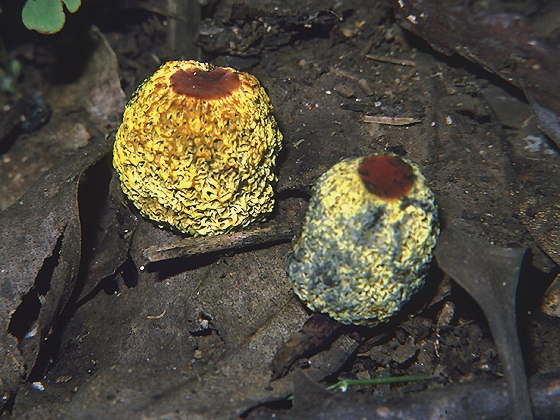
Gymnogaster boletoides J.W.Cribb

Common name: None.
Description: The fruiting structure resembles a small, short-stemmed drumstick with an almost globose head 12.5 cm in diameter. The top of the head has a flat, brown, disk-like area, and the remainder has a yellow surface which when examined closely is maze-like; this yellow area becomes brownish in old specimens. If the yellow surface is touched or bruised, it rapidly turns greenish blue. The stem is about 0.5 cm long and about 35 mm thick; the collections seen so far all seem to have stems that taper downwards. The stem surface is dry, smooth and is reddish brown.
The spores measure 913 × 57 µm and are ellipsoidal, smooth and brown.
Substratum: Gymnogaster boletoides is usually solitary and found directly on soil among litter in either rainforest or eucalypt forest.
Distribution: This species is so far only known from south-eastern Queensland. It has been re-collected at the type locality (the location from which it was first described) of Mt Glorious in the Brisbane hinterland, but has also been collected twice in the Bunya Mountains (about 150 km to the north-west) and also in the Lamington National Park about 80 km to the south. The image shown with this description is of the Lamington material which was not preserved. These Queensland collection sites indicate that the species may also occur in similar habitats in northern New South Wales.
Notes: This very unusual fungus appears to belong to the bolete family. It appears to be widespread but uncommon in the mountainous areas of south-eastern Queensland where it is found in mixed rainforest or eucalypt forest. The species may be mycorrhizal since it belongs to a group that exhibits strong mycorrhizal relationships. Gymnogaster boletoides belongs to a group of fungi that exhibit reduced characteristics: they actually belong to either the gilled fungi or the closely related boletoid fungi but have lost some of the diagnostic characters of their parent groups.

